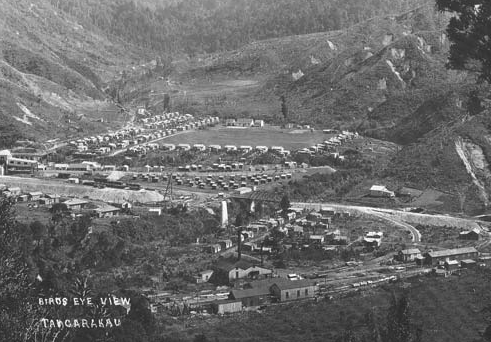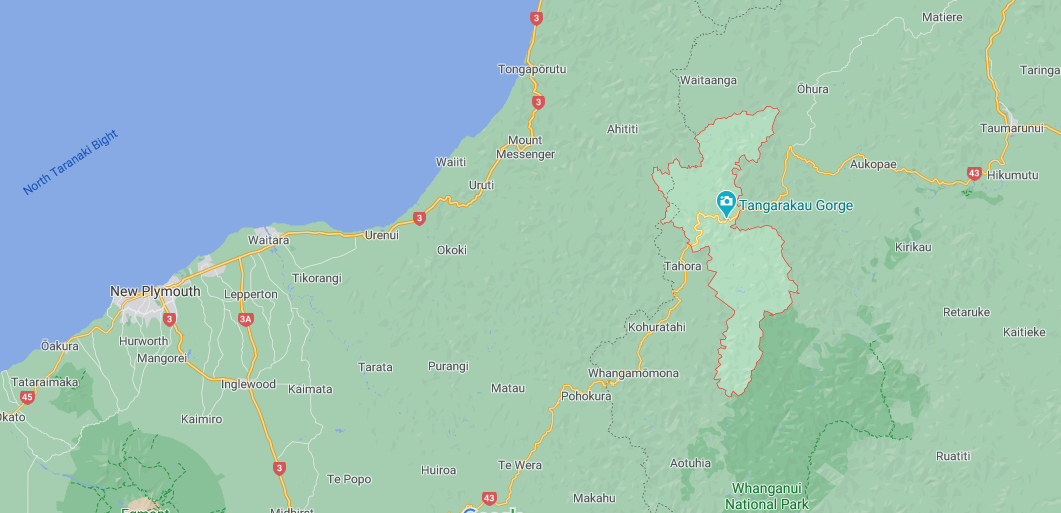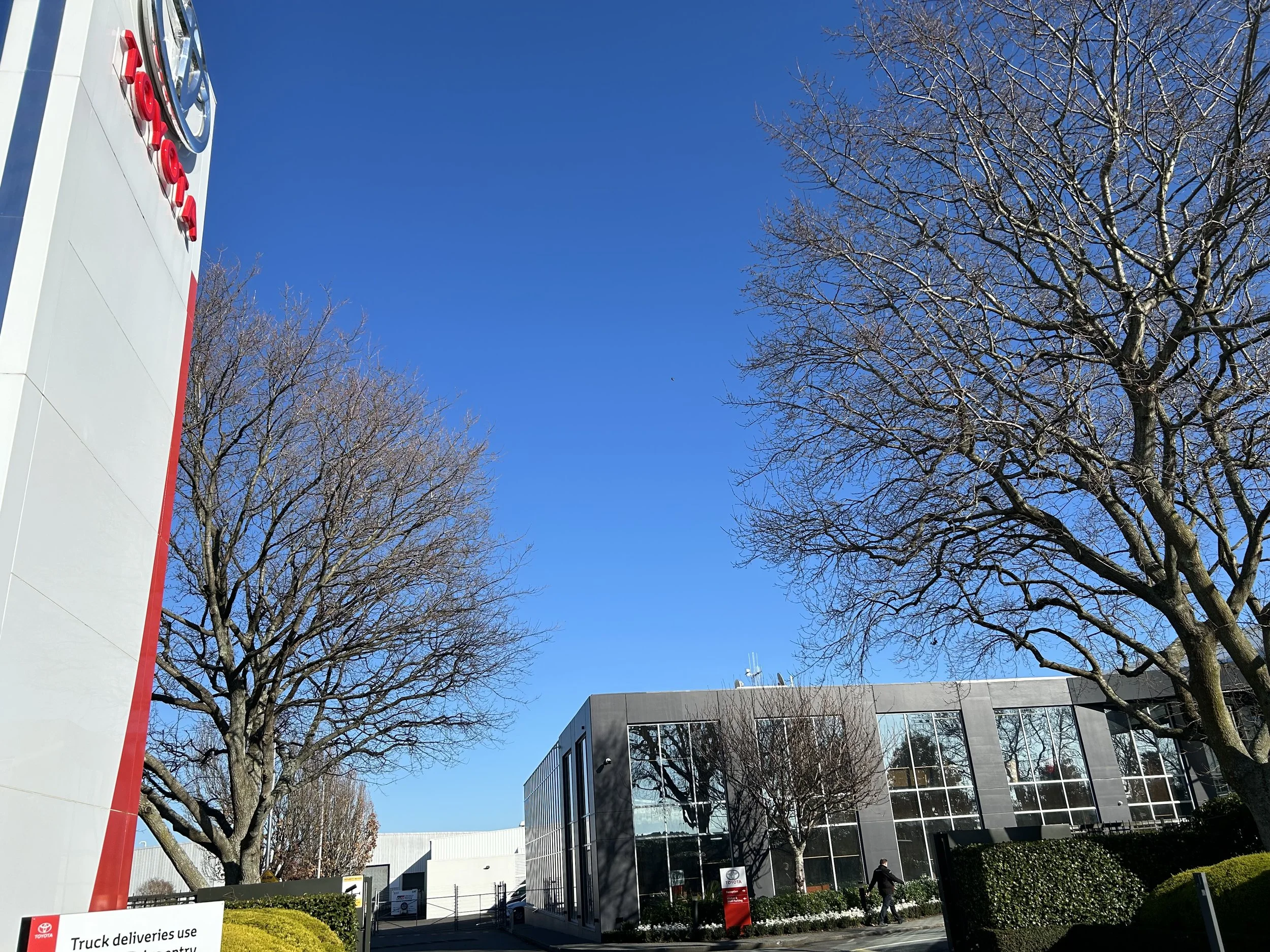Toyota Hilux SR on the road to abandon
/Taking an icon ute to a town that rose in the 1920s’, enjoyed a few good years, died in the 30s’ … and is again a hive of activity.
Tangarakau ghost town is at the end of a 6km unsealed road - an easy drive in a Toyota tailored for this environment.
Toyota Hilux SR 4x4
Price: $50,990
Powertrain and economy: 2.8-litre four cylinder turbo diesel, 150kW/500Nm, 4WD, combined economy 7.5L/100km, CO2 207g/km.
Vital statistics: 5325mm long, 1855mm wide, 1815mm high, 3090mm wheelbase, 17-inch steel wheels.
We like: No-nonsense specification, much improved ride, easy 4WD operation, muscular exterior looks.
We don’t like: Are the new looks as grunty as arch-rival Ford Ranger’s?
IN one of the North Island’s most isolated places, there’s a ghost town.
Nestled in a peaceful Taranaki valley, Tangarakau was briefly a bustling little settlement with a resident population of at least 1200.
Even though many structures have gone, memory of its existence linger.
Raekohua School, nowadays a farm storage shed, once had a roll of 148 children. A large expanse of green grass was once a sports grounds. In its heyday the town boasted nine sports teams and produced three famous All Blacks in Jack Sullivan, Bob Scott and Tiny White.
Elsewhere are remnants of streets once lined with shops. They included a drapery, hairdressers, tobacconist, boot shop, tearooms, confectioner, fruiterer, bakery, social rooms, post office and savings bank, police station, boarding house, doctors, dispensary, maternity annex, picture theatre, lending library and billiards room.
Tangarakau was the second-largest town in central Taranaki in its heyday.
A river runs through Tangarakau, and it played a major role in the settlement’s social structure. On the school side of the river was the housing for married couples with children, nearby were the houses for married couples without children (unkindly nicknamed ‘Seedless Raisins’). On the other side of the river, the accommodation for single men.
Every house had one electric light, and the town even had street lights – the electricity provided via a 32-volt direct current power plant on nearby Powerhouse Flat. This was steam-driven, the boilers fed on coal from a nearby mine.
Tangarakau was created in the mid-1920s as a construction base during development of a railway line connecting Stratford in Taranaki with the main trunk line at Okahukura near Taumarunui in King Country.
As the rail project got into full swing the settlement rapidly grew. From just a few people in 1925, to 856 in 1929, and more than 1200 in 1931.
With the railway project being completed the following year, there was a rapid reversal in population. And then some. Most residents disappeared almost overnight. Buildings began to be tendered off for removal. Soon the settlement was no more, the land reverting back to farmland.
But not quite. These days Tangarakau is the setting for some new enterprises.
The entrance to Bushlands Camp Ground features it own little museum tracing Tangarakau Valley’s history
There’s the Bushlands Camp Ground which has been established right over the top of where the township once was. Appropriately, it markets itself as the Ghost Town, and it is attracting increasing numbers of visitors. There’s also a thriving manuka honey business that harvests the liquid from billions of bees that gather nectar in the surrounding area.
Bushlands must rank as one of the most isolated – if not the most isolated – camping grounds in New Zealand. It is located 81km from Stratford and 72km from Taumarunui, 6km off the Forgotten World Highway which in itself is notorious for being a tough, nausea-inducing drive.
It’s easy enough to find, though. After first checking you have enough fuel because it is 150km between service stations, you continue along the highway until you come to an intersection, just short of a 12km gravel section of SH43 through the Tangarakau Gorge that should have been sealed by now as one of the Government’s “shovel ready” projects but, much to the ire of locals, still hasn’t. Then you follow the railway line along the also unsealed Raekohua Rd to your destination.
It’s an uncompromising drive to get there. Ideally then, it’s best to use a suitable sort of vehicle for the task. A vehicle such as the latest Toyota Hilux ute which boasts additional power and torque from its 2.8-litre turbo diesel, improved chassis with more compliant suspension response to the sudden bumps and corrugations common on unsealed roads, and greater safety specification.
Camp ground accommodation includes cute cottages.
For our foray into the wilds of eastern Taranaki we had a no-nonsense model – the four-wheel-drive double-cab SR version complete with steel wheels, manual tailgate latches, and tie-down points on the outside of the tub rather than ones on the inside that can be difficult to reach when there’s a load of cargo or rubbish on board.
This Hilux felt perfectly at home in this remote part of the North Island. In the typical fashion of utes with their leaf-sprung rear suspension, things did get a bit bouncy at times on the seal while negotiating the undulations (and believe me, there are a lot of them) of the Forgotten World Highway.
But I have to say that in terms of ride, this Hilux must rate as the best yet in the truck’s 50-plus year history. Its softer and more compliant ride combines well with the engine’s broader spread of torque to make an easier and quieter ride – although no improvements will ever totally beat that challenging piece of highway.
Off the seal, the vehicle’s ability to move down to 4WD High on the move was a strong convenience. So too was the Hilux’ new variable flow power steering system which lightens the steering at lower speeds and reduces assistance at the higher speeds, which helped offer a feeling of handling security.
The Forgotten World Highway is a tough drive that winds over four saddles and through one very narrow tunnel, and these days it is even more challenging thanks to the numbers of logging trucks on the road.
For most of its length the highway runs alongside the Stratford-Okahukura railway that took close to 30 years to construct but was operated for only about 70 years before being deemed unusable and closed.
The line runs through Tangarakau – the village used to have a railway station that was a scheduled stop for an express passenger train service that in its heyday pulled up to 12 carriages – but these days the station, like almost every other of the township’s buildings, isn’t there.
Tangarakau’s existence ties to construction of the Stratford-Okahukura railway, an epic construction job accomplished with picks, shovels and dynamite - a project which it's said would have cost $9 billion in today's money. The line closed to rail traffic in 2009, though you can still ride along it in tourist railcarts.
What is there though is the Bushlands Camp Ground, a beautiful setting which offers powered and unpowered tent sites, cabins, and full amenities including ablutions, kitchen facilities, and even an outdoor pizza oven. There’s even a small museum which explains the valley’s Maori and pioneer settler histories.
The facility and surrounding land is owned by the Herbert family, and on our arrival the camping ground’s lawns were being mown by the family’s patriarch Bruce Herbert.
He relates how his wife Joan had the idea to convert a piece of land alongside the banks of the Tangarakau River into the camping area.
That was back in 1988, at a time when power authorities had just finished running high-tension lines through the Herbert farm.
In a classic case of ‘back-country bartering’, Bruce Herbert convinced the power people to forgo any cash payment for access to the family land in return for transporting buildings from a working men’s camp 20km away at Whangamomona to become part of the planned camping ground.
Joan passed away in 1992, leaving Bruce with three children to raise on his own and unable to work the farm full-time. As a result, much of the land quickly reverted back to manuka and native bush.
Eastern Taranaki locals aren't backwards in making their views known in respect to the state of their highway.
But as they say, when one door closes another often opens. With the Herbert family their circumstances opened up a new business opportunity – manuka honey. The family has formed Pouatu Honey, and the company has established a new processing and packaging plant on land that was once right in the middle of Tangarakau village.
It’s fascinating how new enterprises develop from what was once before.
Early last century it was decided a railway needed to be built as an alternative route for the main trunk line between Wellington and Auckland. Tangarakau Valley was chosen as the site for a construction town during this project.
Both have now passed into history, although the remnants are still there. But now there’s the fully-fledged camping ground where visitors can be reminded of all that history, and a major manuka honey business taking new-age commercial advantage of the natural environment.
A new improved Tangarakau? Yes indeed – and well worth a visit aboard the new improved Hilux ute.























